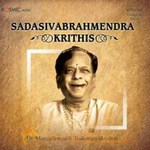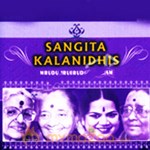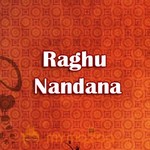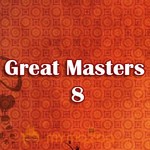M. Balamuralikrishna
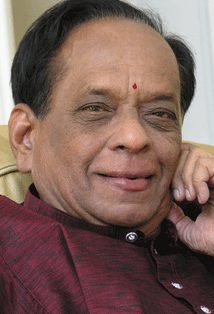
| Alias | Mangalampalli Balamurali Krishna |
|---|---|
| Age | 87 years |
| Height | 5'8" |
| Occupation | Singer |
| Language Worked in | Hindi, Telugu, Tamil, Kannada, Malayalam |
| Birth Place | Sankaraguptam, East Godavari District, Madras Presidency, British India |
| Eye Color | Black |
| Hair Color | Black |
| Religion | Hinduism |
| Marital Status | Married |
| Parents | Mangalampalli Pattabhiramayya, Suryakanthamma |
| City | Hyderabad |
Mangalampalli Balamurali Krishna (Telugu: మంగళంపల్లి బాలమురళీకృష్ణ) pronunciation (help·info) (born
Under his guidance, the young Balamuralikrishna learnt Carnatic Music. At the age of eight, Balamuralikrishna gave his first full fledged concert at a Thyagaraja Aradhana, Vijayawada. Musunuri Suryanarayana Murty Bhagavatar, a distinguished Harikatha performer, saw the musical talent in the child and gave the prefix 'Bala' (child) to the young Muralikrishna. This title has stuck ever since and Balamuralikrishna has been known so.
Balamuralikrishna thus began his musical career at a very young age. By the age of fifteen he had mastered all the 72 melakartha ragas and had composed krithis in the same. The Janaka Raga Manjari was published in 1952 and recorded as Raagaanga Ravali in a nine-volume series by the Sangeeta Recording Company. Not merely content with his fame as a carnatic vocalist, very soon started playing the kanjira, mridangam, viola and violin. He also accompanied various musicians in violin and is also noted to give solo viola concerts.
Balamuralikrishna started his career at the age of six. Till date, he has given over 25000 concerts worldwide.[4][5] He accompanied Pandit Bhimsen Joshi. He also gave jugalbandi concerts with Pandit Hariprasad Chaurasia and Kishori Amonkar, among others. He is also known for popularising the Compositions of Sri Bhadrachala Ramadasu and Sri Annamacharya.
Concerts
Balamuralikrishna during a concert in Kuwait on 29 March 2006, accompanied by Mavelikkara Sathees Chandran (violin), Perunna G. Harikumar (mridangom), Manjoor Unnikrishnan (ghatam)
Balamuralikrishna's concerts combine sophisticated vocal skills and rhythmic patterns of classical music with the popular demand for entertainment value. Balamurali Krishna has been invited to give concerts in many countries, including US, Canada, UK, Italy, France, Russia, Sri Lanka, Malaysia, Singapore, Middle East and many more. While his native tongue is Telugu. His work includes other multiple languages of Kannada, Sanskrit, Tamil, Malayalam, Hindi, Bengali, Punjabi.
He appeared as featured soloist with an award-winning British choir, performing the "Gitanjali Suite" with words from Rabindranath Tagore's Nobel Prize-winning poetry and music by Dr. Joel, the noted UK-based Goan composer. His clear diction in several languages prompted an invitation to record Tagore's entire Rabindra Sangeet compositions in Bengali, preserving them for posterity. He has sung in French, and even ventured into jazz fusion, collaborating with the top Carnatic percussion teacher, Sri T.H. Subash Chandran, in a concert for Malaysian royalty.
He has recently become increasingly interested in music therapy, and now performs only occasionally. He gave its authorization to S. Ram Bharati to found "Academy of Performing Arts and Research" in Switzerland and is also working on music therapy. He established the 'MBK Trust' with the objective of developing art and culture and for carrying out extensive research into Music Therapy. A dance and music school, 'Vipanchee' is a part of this Trust and is run by his managing trustee Kalaimamani Saraswati.
In February 2010, he did a three-day concert in Vishakapatnam, a first in his career.
Balamuralikrishna has composed over 400 compositions in various languages like Telugu, Sanskrit and Tamil. His compositions range from Devotional to Varnams, Krithis, Javalis and Thillans, in all the fundamental 72 melakartha ragas to film music.
He made his acting debut with "Bhakta Prahlada" (1967) under AVM Productions as Narada, and has acted in various films.
Innovations
Balamuralikrishna performs in 2005
Characteristic of Balamuralikrishna's musical journey has been his non-conformism, spirit of experimentation and boundless creativity. Balamuralikrishna has innovated the whole Carnatic Music System by keeping its rich tradition untouched. The ragas like Ganapathi, Sarvashri, Mahati, Lavangi etc. are credited to him. The ragas which he invented represent his quest for new frontiers. Ragas like Lavangi are set to three or four notes in ascending and descending scale Ragaas created by him, like Mahathi, Lavangi, Sidhdhi, Sumukham have only Four Notes; While Ragaas created by him, like Sarva Sri, Omkaari, Ganapathy have only Three Notes .
He also innovated the tala system. He has incorporated "Gathi Bedam" in the "Sa Sabdha Kriya" ( Actions in Talas, which can produce sound/Sabdha are called Sa Sabdha Kriya )part of the existing Tala chain, thus throwing open a new chain of Tala System. Saint Arunagirinaadhar used to inject such systems in his famous Thirupugazh, but only as Sandham, while Balamuralikrishna is known to be the pioneer in bringing such Sandhams into a logical rhythm, with Angam & Definition. Thri Mukhi, Panchamukhi, Saptha Mukhi & Nava Mukhi are the Basic Classifications, he has named for his New Tala System
 'I am not a good person' Dr. Vishnuvardhana
'I admit that I am not a good person'. I am not a learned person. A sea of change in…
'I am not a good person' Dr. Vishnuvardhana
'I admit that I am not a good person'. I am not a learned person. A sea of change in…
 'Vande Matharam' another retune
After making waves with his patriotic album Vande Matharam produced in collaboration with Bharat Bala Productions, music director A R…
'Vande Matharam' another retune
After making waves with his patriotic album Vande Matharam produced in collaboration with Bharat Bala Productions, music director A R…
 'Vande Matharam' another retune
After making waves with his patriotic album Vande Matharam produced in collaboration with Bharat Bala Productions, music director A R…
'Vande Matharam' another retune
After making waves with his patriotic album Vande Matharam produced in collaboration with Bharat Bala Productions, music director A R…


